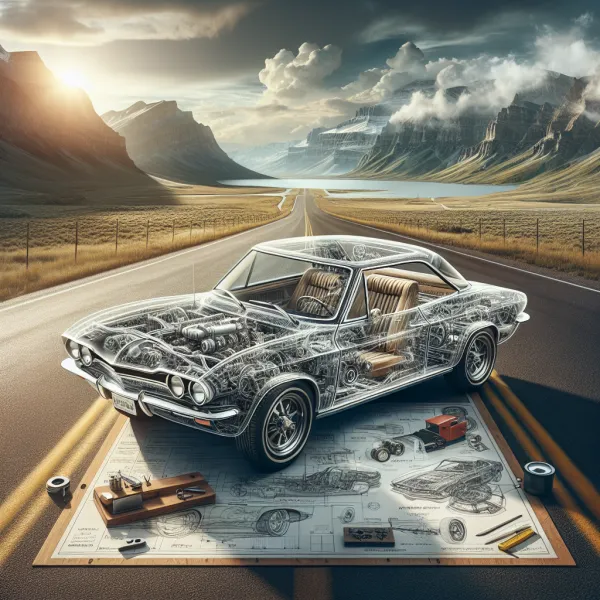The Chevrolet Corvair: A Revolutionary Classic That Defined an Era
The Chevrolet Corvair: A Revolutionary Classic That Defined an Era
The Chevrolet Corvair, produced by General Motors from 1960 to 1969, remains one of the most fascinating and controversial vehicles in automotive history. As the only mass-produced American car with a rear-mounted, air-cooled engine, the Corvair broke away from traditional design norms and introduced innovative engineering to the U.S. market.
A Bold Step in Automotive Design
When the Corvair debuted in 1960, it was unlike anything American car buyers had seen before. Its rear-mounted, air-cooled flat-six engine was inspired by European designs, particularly Volkswagen and Porsche. This unique configuration allowed for a flat floor and spacious interior, making the Corvair a practical yet stylish choice for families and enthusiasts alike.
The Corvair was available in a variety of body styles, including sedans, coupes, convertibles, and even station wagons. Chevrolet also introduced performance-oriented versions, such as the Corvair Monza, which featured sportier handling and a more refined interior.
Innovative Features
The Corvair was packed with innovative features that set it apart from its competitors:
- Independent Suspension: The Corvair's fully independent suspension provided a smoother ride and better handling compared to many of its contemporaries.
- Turbocharged Engine: In 1962, Chevrolet introduced the Corvair Monza Spyder, one of the first American cars to feature a turbocharged engine, delivering impressive performance for its time.
- Compact Design: The Corvair's compact size made it an ideal choice for urban driving, offering a level of maneuverability that was rare in American cars of the era.
The Ralph Nader Controversy
Despite its innovations, the Corvair became the subject of intense scrutiny following the publication of Ralph Nader's book, Unsafe at Any Speed, in 1965. Nader criticized the Corvair's handling characteristics, particularly its tendency to oversteer due to the rear-engine layout and swing-axle suspension design used in early models.
While subsequent investigations, including a 1972 report by the National Highway Traffic Safety Administration (NHTSA), found that the Corvair was no more dangerous than other cars of its time, the damage to its reputation was already done. Sales declined sharply, and Chevrolet discontinued the Corvair after the 1969 model year.
The Corvair's Legacy
Today, the Chevrolet Corvair is celebrated as a classic car that pushed the boundaries of American automotive design. Enthusiasts appreciate its unique engineering, stylish design, and historical significance. Corvair clubs and events continue to thrive, keeping the spirit of this groundbreaking vehicle alive.
The Corvair was ahead of its time, and its innovative design paved the way for future advancements in automotive engineering. – Automotive Historian
Conclusion
The Chevrolet Corvair remains a symbol of innovation and ambition in the automotive world. While its production run was relatively short, its impact on car design and engineering continues to be felt. Whether you're a collector, a car enthusiast, or simply someone who appreciates automotive history, the Corvair is a vehicle worth celebrating.
